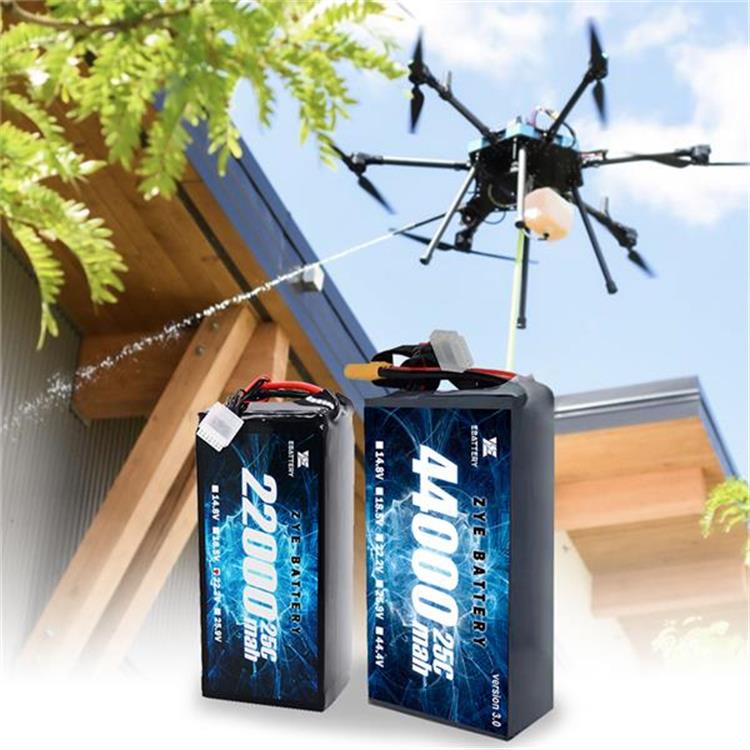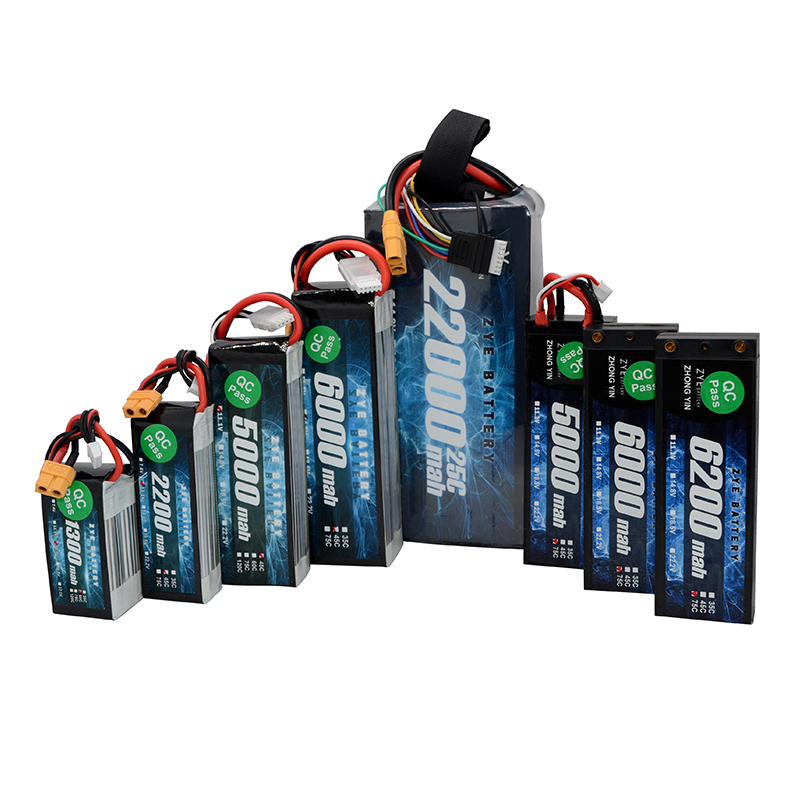Why is the Capacity of Lipo Battery Losing?
2025-07-26
The lipo-battery stands out for its high power output and efficiency. Many users wonder about the longevity of these batteries and whether they eventually go bad. And what is the memory effect in batteries and does it affect Lipo battery?
In this article, we'll explore the lifespan of LiPo batteries, focusing on the battery configuration, and provide valuable insights on maintaining and maximizing their performance.

Signs the lipo-battery is Losing Capacity
As with all rechargeable batteries, lipo batteries experience gradual capacity loss over time. Recognizing the signs of a deteriorating battery can help you take appropriate action before it becomes unusable. Here are some telltale indicators:
1. Reduced runtime: If you notice your device operating for shorter periods between charges, it's a clear sign of capacity loss.
2. Swelling or puffing: Physical deformation of the battery is a serious issue and indicates internal damage.
3. Increased charging time: A battery that takes longer to reach full charge may be losing its ability to hold a charge efficiently.
4. Higher self-discharge rate: If the battery loses charge quickly when not in use, it's likely deteriorating.
5. Inconsistent voltage readings: Fluctuating or dropping voltage levels during use can indicate cell imbalance or damage.
It's crucial to monitor these signs and replace your 6s lipo battery when necessary to ensure optimal performance and safety in your devices.

What Is the Memory Effect in Batteries?
The memory effect, also known as battery memory or lazy battery effect, is a phenomenon observed in certain types of rechargeable batteries. It occurs when a battery is repeatedly charged before it has been fully discharged, causing it to "remember" the shorter cycle and lose its full capacity over time.
Good news for LiPo enthusiasts: LiPo batteries do not suffer from the memory effect. The chemistry and construction of LiPo cells are fundamentally different from NiCd and NiMH batteries, which means they don't develop the crystalline formations responsible for the memory effect.
This is one of the key advantages that have made LiPo batteries, including the popular lipo battery configuration, so widely adopted in various applications.
How to Prolong the Lifespan of a Lipo Battery
While lipo-battery will eventually degrade, proper care and maintenance can significantly extend their useful life. Here are some effective strategies to maximize the lifespan of the lipo battery:
1. Proper Charging: Always use a balance charger designed for LiPo batteries. This ensures each cell in your 6s lipo battery or other configurations is charged to the optimal voltage.
2. Avoid Deep Discharges: While LiPo batteries don't have memory issues, deep discharges can damage the cells. Avoid discharging below 3.0V per cell.
3. Storage Voltage: When not in use for extended periods, store your LiPo batteries at about 3.8V per cell. This is often referred to as "storage charge" and helps maintain battery health.
4. Temperature Management: Keep your LiPo batteries away from extreme temperatures. Ideal operating and storage temperatures are between 15°C and 35°C (59°F to 95°F).
5. Regular Use: While not directly related to memory effect, using your LiPo batteries regularly can help maintain their performance. Batteries left unused for very long periods may experience some degradation.
Charging Practices: Always use a LiPo-specific charger with balancing capabilities. This is particularly important for multi-cell packs like a 6s lipo battery. Proper balancing ensures all cells maintain an equal voltage, which is crucial for battery longevity and safety.
Discharge Management: LiPo batteries should never be fully discharged. Most experts recommend stopping use when the voltage reaches about 3.5V per cell under load. Many modern electronic speed controllers (ESCs) have low-voltage cutoffs to prevent over-discharge.
Storage Considerations: If you're not planning to use your LiPo battery for more than a few days, it's best to store it at the proper storage voltage (around 3.8V per cell). Many LiPo chargers have a storage charge function that makes this process easy.
Physical Care: LiPo batteries are sensitive to physical damage. Always inspect your batteries for any signs of swelling, punctures, or other damage before use. Store and transport them in a fireproof LiPo safe bag for added safety.
Cycle Management: While LiPo batteries don't have a memory effect, they do have a finite number of charge cycles. High-quality LiPo batteries can typically handle 300-500 cycles before significant capacity loss occurs. Keep track of your battery's cycles and consider replacing it when performance begins to noticeably decrease.
Temperature Awareness: LiPo batteries perform best at room temperature. Avoid charging or discharging them when they're very cold or hot. If you've been using your 6s lipo battery in cold conditions, allow it to warm up to room temperature before charging.

By adhering to these care guidelines, you can significantly extend the life of your LiPo batteries and maintain their capacity over time.
If you have any questions about LiPo battery care or are looking for high quality lipo battery solutions, please feel free to contact us at coco@zyepower.com. We're here to help you power your projects safely and efficiently.
























































